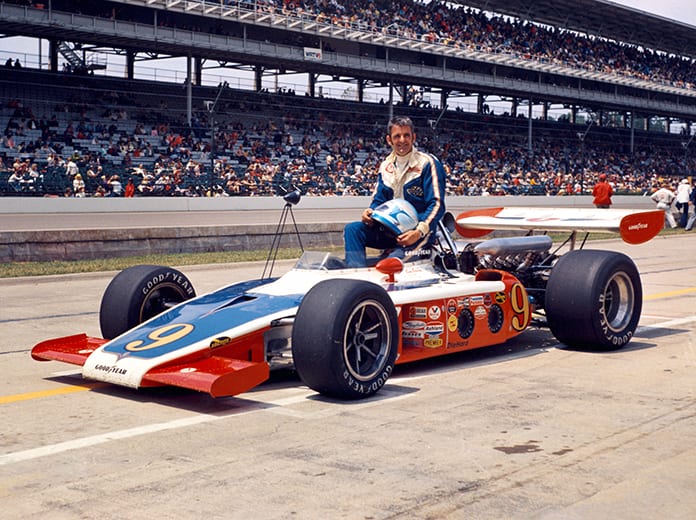Sammy Sessions came along a decade too late to make the impact on the Indianapolis 500 that was indicative of his talent.
One who excelled in every form of racing he attempted, Sessions followed the traditional route to Indianapolis Motor Speedway. He shot through the USAC short-track ladder but stepped into the speedway scene just as car owners were turning to road course racers because of the rear-engine revolution.
He struggled to find rides and settled for spots with under-funded teams. Characteristic of the short-budgeted teams he drove for, Sessions started in the last row three times and his best starting spot was 23rd.
Nevertheless, he qualified for seven Indianapolis 500s and managed two top-10 finishes — a ninth in 1968 and fourth in 1972. In 1972, he also raced to top-five finishes at Ontario (Calif.) Motor Speedway and Michigan Int’l Speedway.
Unquestionably, Sammy Sessions knew how to get around a race track.
Born Allen Dale Sessions in Nashville, Mich., in 1935, his first taste of speed came racing powerboats when he was 14. He eventually made his way into the jalopies at Hastings Speedway.
It was when he graduated to supermodifieds, however, that his talent became obvious. He claimed the Grand Rapids Speedrome track championship in 1962 and won a series of prominent national supermodified events.
In 1964, he jumped into the furiously competitive supermodified racing at Oswego (N.Y.) Speedway and won three consecutive features. Racing toward a fourth consecutive win, he suffered a horrendous crash that hospitalized him for a month. It was during that sheet time that Sessions decided to move to USAC for 1965.
He succeeded in all three USAC major open-wheel divisions. He won 22 USAC sprint car features and the 1972 USAC National Sprint Car championship. That performance put him in the Sprint Car Hall of Fame. In midgets, he won the prestigious Turkey Night Grand Prix in 1968. Sessions earned 21 top-10 finishes racing championship dirt cars.
In addition to his canny driving talent, Session’s fierce determination and calculating desire to race at all costs also fueled his success.

Fellow driver and friend Gary Irwin recalls a humorous incident during a USAC midget race in Davenport, Iowa, that illustrates that well. Driving the Shannon Brothers midget, Sessions experienced a nasty flip during a heat race.
“He had a bad cut above his right eye,” Irwin recalled. “So they loaded him in the ambulance and headed to the hospital with the sirens screaming.”
With only one ambulance at the track, all the action halted until it returned. Officials, competitors and fans expected a rapid turn around. They waited and waited. No ambulance.
As it turned out, Sessions knew they couldn’t run the feature without the ambulance in place and convinced the driver to wait until he was examined, treated and released before returning. He even insisted the doctor sew him up without pain medication. He didn’t want to be impaired. He planned to race.
By the time Sessions got back to the track, his eye was swollen completely shut. He ducked officials so they wouldn’t notice and climbed quickly in his car. Bob Higman, serving as chief mechanic, had the car repaired. Sessions started fourth and was quickly leading.
“He must’ve passed a hundred cars that night,” laughed Irwin. “With his eye swollen shut, he had no depth perception. He was OK as long as he was following someone, but when he took the lead, he’d slide off the track and have to restart in the back. He’d pass everyone again and spin off. He must’ve done that three or four times. He finally finished second.”
By 1976, Sessions had returned to his supermodified roots, running with the TRI-Sac series. TRI-Sac competed throughout Michigan and neighboring states. Drivers had to race both supermodifieds and winged sprint cars to score points. It fit Sessions perfectly and he won the series championship in 1976.
Continually searching for ways to satisfy his competitive urges, Sessions turned to snowmobile racing with the SnoPro series. As a surprise to no one, he won on them.
But they also proved tragic.
At a meet in Alexandria, Minn., on Dec. 17, 1977, Sessions suffered a heart attack and his snowmobile pounded off course and into a tree. He died instantly.
